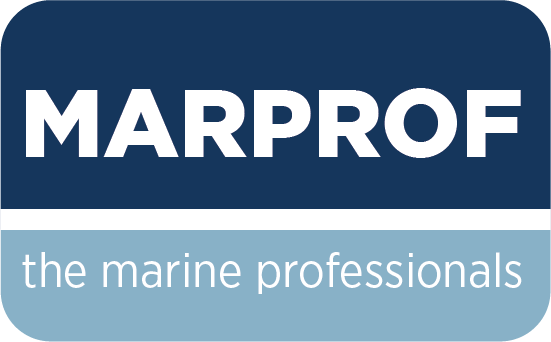Omertà
Noun
A Mafia code of silence about criminal activity and a refusal to give evidence to officials.
Our industry has a problem.
We are uniquely designed to meet our specific challenges, operating in the most hostile environment normally used by man and requiring complete transparency to facilitate the movement of goods around the world’s borders and barriers.
So, we protect ourselves; whilst on the one hand we are open and transparent, on the other we are closed and secretive.
Yes; the shipping industry employs omertà ruthlessly.
In the world of modern insurance, which we invented, instead of relying on broad statistics to cover up other people’s accidents or mistakes we have clubs who rely on the members to act properly and to manage the group risk.
This leads to cover ups – it is better for the group to take the hit quietly than to engage the problem, or for the member to pay the price without engaging the others – who then might themselves admit their similar problems.
Nowhere is this more obvious and insidious than with asbestos
All over the world individual shipowners are quietly absorbing the costs of finding asbestos on their ships. Everyone is involved. The shipowner, the charterer, the class society, the Flag, the shipyard, the repair yard.
Of course, no-one will admit it because the problem is feared to be too big to handle if omertà is broken. This has historically been the way with asbestos; pretending the problem didn’t exist followed by decades of cover up, making the problem exponentially worse when finally admitted.
This has killed tens, hundreds of thousands of extra people; in the UK in 2016 alone there were 2,500 asbestos-caused mesothelioma deaths.
Even so, why should asbestos-related omertà end?
The biggest driver will be the application of the EU Ship Recycling Regulation, and its effect on SOLAS (the International Convention for the Safety of Life at Sea).
By the end of 2020, every ship entering an EU port will have to have an Inventory of Hazardous Materials (IHM) certificate or statement of compliance.
This isn’t your old-fashioned ‘Green Passport’ inventory. Far from it. According to EMSA’s Best Practice Guidance – the only real information published by the EU – the IHM should be a document which proves that experts have worked onboard your ship, actively searching for hazardous materials, including asbestos.
This means that the dirty little secret will be exposed, and not just on one or two ships
A little-known study by The Netherlands, on ships built after 1 July 2002, found asbestos on 11 out of 12 ships surveyed.[1] And a well-known IHM company has found it on 80% of all ships surveyed.
Note that we’re only talking about ships built after 1 July 2002. Ships built before that date were stuffed full of the most dangerous, sprayed asbestos – amosite (brown), and crocidolite (blue) – and legally there isn’t an issue; simply say “it’s being managed onboard” and sail merrily on.
This demonstrates that the presence of asbestos onboard ships is not only a safety issue – it’s a SOLAS compliance issue. With very rare exceptions SOLAS banned asbestos from 1 July 2002, and any such exceptions were removed completely in 2011.
Further, SOLAS is very clear in its text as to what exemptions it can allow or equivalences it can consider – and there are none in the section on asbestos.
Seeing as SOLAS is accurately transcribed or enacted in the law of every party country, it’s clear that the presence of asbestos is illegal on ships built after July 2002. No ifs, no buts; it’s illegal.
No get out clause – or is there…?
IMO MSC.1/Circ.1374 [2], which Robin was on the drafting committee of, states that when asbestos is detected onboard, in contravention of SOLAS, action should be taken to have it removed within a time frame of 3 years.
For ships built before 2002, another IMO circular applies: The Guidelines for maintenance and monitoring of on-board materials containing asbestos.[3]
Marprof firmly believes that this advice from the IMO should be taken to its logical conclusion: allow asbestos already present onboard all ships to be managed, but under carefully controlled situations.
After all, it’s impossible to guarantee you have removed all the asbestos once it has been found on your ship. Another person can always potentially come along and find more. Therefore, in our opinion, provided the asbestos found is limited to crysotile (white) asbestos in non-friable products not exposed to damage, such as gaskets, then a shipowner should be allowed to manage it safely onboard. He should agree this with the Flag State; he must have proper management procedures onboard; and he should plan to remove asbestos whenever practical.
The shipowner with his skilled, trained and aware crew should be allowed to manage the problem onboard, in a more effective way to a building owner with his unskilled, untrained and unaware occupants.
Break the omertà
Jim and Robin have worked with shipowners to try to get this accepted by Flags, which brings us back to where we started. Because of omertà the asbestos issue is not sufficiently recognised, and no Flag wants to be the first.
It is a politically difficult position, but without admitting the problem exists we can’t begin to solve it.
The industry must not sleepwalk into this issue. Once the EU’s requirement for a certified IHM ‘suddenly’ becomes a requirement it will be too late. But to do this the industry has to break omertà, to admit we have a problem, and then to solve it practically.
Marprof are not breaking the vow; we are merely warning you that someone – or something else – is about to.
[1] https://puc.overheid.nl/nsi/doc/PUC_1177_14/1/
[2] http://www.imo.org/blast/blastDataHelper.asp?data_id=30261&filename=1374.pdf
[3] http://www.imo.org/blast/blastDataHelper.asp?data_id=5361&filename=1045.pdf


Recent Comments